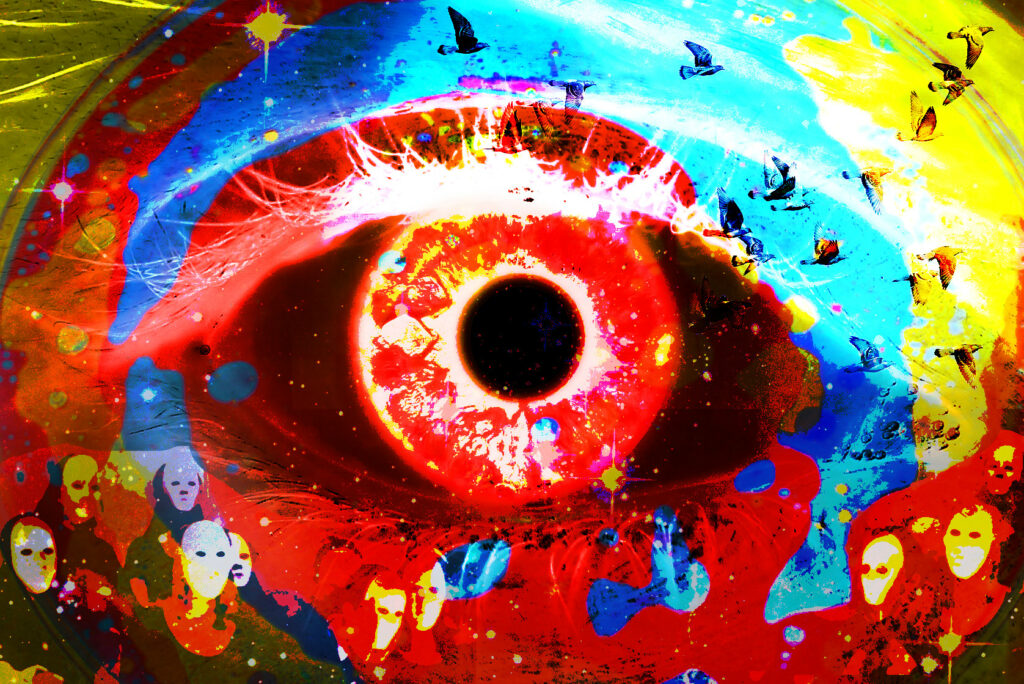A New Form of LSD to Treat Schizophrenia
The bizarre effects it had on the mind suggested that the compound, which he named LSD, might provide insight into debilitating mental conditions, like schizophrenia. To have such mind-altering effects, scientists surmised that there must be an LSD-like system of communication between neurons in the brain that the drug was perturbing. That led to the discovery of serotonin receptors, and to a deeper understanding of how psychosis and mood are regulated naturally by these receptors.
Hoffmann’s astonishing discovery held great promise for using LSD to treat psychological conditions like schizophrenia and chronic depression, but the extreme psychosis it caused thwarted that hope.
Now, the dream of modifying LSD in a way to treat mental illness without the psychotic effects has been achieved by a team of researchers lead by biochemist David Olson of UC Davis. The findings were just published in the Proceedings of the Academy of Sciences, USA.
The researchers achieved this goal, not by chance as Hoffmann had, but by virtue of the enormous advances in understanding the intricacies of serotonin receptors and the LSD molecule. Looking at the molecular structure of LSD and how it fits like a glove into the pocket of serotonin receptors, Olson and his team surmised that if they clipped off two specific atoms from LSD, it would still fit snuggly into the serotonin receptor pocket, but it would lose its attachment to the receptor through hydrogen bonds. Severing those critical tethers might prevent the psychedelic effects but still enable the receptor to have beneficial actions that could relieve symptoms of schizophrenia.
The modified LSD, which they named JRT, did just that—and more. It stimulated neurons to sprout new dendritic branches and synapses. This could enable dysfunctional neural circuits to rewire to overcome the disorder, perhaps after only a single dose.
LSD and the receptors it acts upon
We now know that there are 14 different kinds of serotonin receptors in humans, also known as 5-HT receptors. Over the years, research has pinpointed how these different receptor subtypes and variants operate and what specific effects they have on the brain and body. Some even act in the gut, which is the reason for the unwanted intestinal side effects that serotonin receptor reuptake (SSRI) drugs can have when used to treat depression and psychosis.
LSD also is rather promiscuous, with actions that can stimulate or inhibit other receptors, including dopamine receptors. That side effect can cause Parkinson’s-like effects in some people with schizophrenia and especially when treated with SSRIs. If the LSD molecule could be tweaked to have less promiscuous action and bind selectively to receptors elevating mood and relieving psychosis, JRT could be an effective treatment for schizophrenia and other mental disorders.
The researchers found that JRT did not act promiscuously to inhibit dopamine receptors like LSD does. It bound tightly to 5-HT1, 5-HT-2, and 5-HT-5, but not to the many other serotonin receptor subtypes, histamine, and adrenergic receptors that LSD also binds.
JRT quells symptoms of schizophrenia in animal models and sprouts new synapses
In animal studies used to test symptoms of schizophrenia, JRT produced none of the hallucinogenic effects of LSD. Moreover, the genes that are activated in the prefrontal cortex in schizophrenia and by LSD were not activated in response to treating rats with JRT. JRT also produced potent antidepressant effects in well-established tests on rats, that were 10 times more potent than ketamine.
Knowing that schizophrenia causes a loss of synapses, and that LSD stimulates the formation of new synapses, the researchers added JRT to neurons from the rat cerebral cortex growing in culture and found that the neurons sprouted extensive new dendritic branches and new synapses. This was followed up with studies on the mice treated with the drug after which their brains (the prefrontal cortex) were examined using scanning electron microscopy. One dose of JRT caused a 46% increase in the number of dendritic spines in the prefrontal cortex 24 hours later.
Synapses are also lost in chronic depression. After inducing depression behavior by injecting mice with the stress hormone corticosterone, one dose of JRT reversed the behavioral effect (anhedonia), and rescued the loss of synapses.
What a long, strange trip it’s been
This new discovery from a modified form of LSD highlights a pathway to harness the potential of other psychedelic drugs to treat illnesses such as schizophrenia, bipolar disorder, psychosis, and certain neurodegenerative diseases.
First published in Psychology Today
 Working in his lab at the pharmaceutical company Sandoz in 1938, chemist Albert Hoffmann was investigating an alkaloid from the ergot fungus in search of a new drug that would act on the brain to stimulate respiration (an analeptic). Suddenly, all that changed when he was plunged into a mind-blowing psychedelic state after he accidentally absorbed traces of the potent compound.
Working in his lab at the pharmaceutical company Sandoz in 1938, chemist Albert Hoffmann was investigating an alkaloid from the ergot fungus in search of a new drug that would act on the brain to stimulate respiration (an analeptic). Suddenly, all that changed when he was plunged into a mind-blowing psychedelic state after he accidentally absorbed traces of the potent compound.